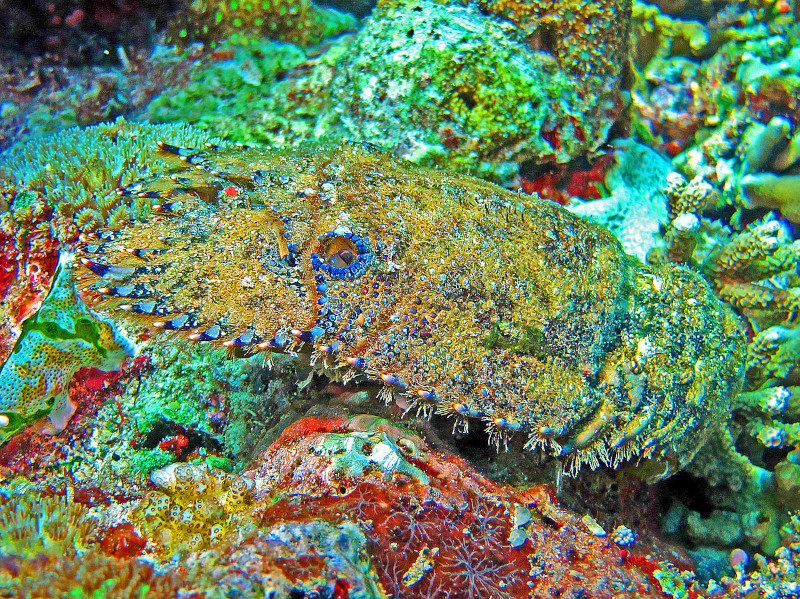Sculptured Mitten Lobster Facts
- This beguiling sea creature most frequently goes by the unique but imaginatively descriptive common name of the Sculptured Mitten Lobster. This marvel of Nature also holds several other, though less frequently employed, non-technical names, however.
- These include such terms as the similar term sculptured slipper lobster, in english. In the native language of the local Indigenous Peoples, though, it has two names. That’s because, in their tongue, they refer to it as either the ula-pehu or the ula-pápapa.
- Professionals, meanwhile, typically refer to this Arthropod by its formal, scientific name. That, however, like so many others, remains quite hard to pronounce. This holds true due to the fact that its technical name is that of the Parribacus antarcticus.
- The first formal recognition of this wonder of evolutionary processes, however actually took place back in the year 1793. This scientifically noteworthy accomplishment further occurred due to the efforts of the respected Danish zoologist, Niels Tønder Lund.
- Thankfully, the crustacean seems to be maintaining a population base that’s both sizeable and sufficient. This further appears to hold true throughout the entirety of its natural range. The IUCN, therefore, currently lists it as Least Concern on its Red List.
- The Sculptured Mitten Lobster nevertheless must be considered to facing some potential threats to its existence. Habitat degradation and loss due to human activities pose possible dangers to it. Its greatest threat though likely consists of climate change.
Related Articles
Sculptured Mitten Lobster Physical Description
Although the magnificent Sculptured Mitten Lobster certainly merits attention and appreciation, it does so for reasons other than sheer physical seize. That’s because, despite its undeniably intriguing appearance, it remains a relatively small varity of lobster.
Much like most of its relatives, furthermore, it does display the physiological characteristic of sexual dimorphism. In its specific case, however, this trait remains extremely minor. Specifically, males attain a larger average size than females, but only just slightly.
Overall, though, mature individuals reach an average body length of roughly 4.7 – 5.9 in (12 – 15 cm). Exceptional specimens do occasionally appear, though, Yet even these rare giants of their kind never exceed 7.9 in (20 cm) to the knowledge of researchers.
The general body shape of this remarkable Decapod typically develops as relatively flattened. This further manifests a comparatively dense covering of hairs and tubercules on the dorsal section. The abdominal section, though, displays only a few of these.
Color patterns among mature specimens of the Sculptured Mitten Lobster, however, vary significantly between individuals. Certain patterns nonetheless predominate. Most present backgrounds of yellowish-red or greenish shades, with brown or black mottling.
- Kingdom: Animalia
- Phylum: Arthropoda
- Class: Malacostraca
- Order: Decapoda
- Family: Scyllaridae
- Genus: Parribacus
- Species: P. antarcticus
Sculptured Mitten Lobster Distribution, Habitat, and Ecology
Fortunately, both for the Sculptured Mitten Lobster itself, and those of us who appreciate nature, it evolved as native to a relatively broad swathe of the globe. That’s due to the fact that it appears in a range than includes much of the Western Pacific, and the Indian Ocean.
More precisely, individuals live in a zone that extends as far west as the state of Florida, in the United States, in North America. From there, though, that range extends to northern Brazil, the southern coast of Africa, all the way to Hawaii, in the South Pacific Ocean.
Its own nature, in terms of habitat preference, though, severely limits its possible zones of habitation. That’s because this remarkable crustacean also evolved as a primarily bottom-dwelling species. In that regard, it mirrors the great majority of its kindred.
It further only makes its home within a very small, precise range of depths. Individuals only live in the extremely shallow regions, extending to no more than 65.6 ft (20m) in depth. The animal further prefers coral or stone reefs or lagoons, usually with a sandy bottom.
The marvelous Sculptured Mitten Lobster, again, like its kindred, evolved as a carnivore. In its case, its diet principally consists of the species that share its precise habitat zone. This, however, includes a variety of small shrimps, molluscs, crabs, and sea urchins.
The amazing Arthropod also evolved as a strictly nocturnal species, under normal conditions. Indivduals typically spend the majority of the day concealed under under large stone slabs, or ledges. It also quite often does so in small groups, being somewhat social.
Species Sharing Its Range
Check out our other articles on 5 Island-Evolved Herbaceous Plants, Earth’s Many Magical Moths, 3 Astonishing African Lizards, The Mighty Tornado, 4 Bulgarian Geological Marvels

